Serket: Scorpion Goddess Who Could Heal Poisonous Bites And Sting Evildoers
A. Sutherland - AncientPages.com - In ancient Egyptian beliefs, Serket (Serqet, Selkis) controlled the breath of life, protected righteous deeds, healed deadly bites of snakes and scorpions, and punished evildoers.
Serket and her scorpion. Edfu Temple. Image credit: MatthiasKabel - CC BY-SA 3.0
The scorpion is a symbol that appeared on the earliest Egyptian artifacts related to the earliest human settlements to the beginning of the Early Dynastic Period around 3100 BC. Serket was depicted as a scorpion with the head and torso of a woman or a woman with a scorpion on her head.
In a strong association with the scorpion, which is famous for protecting its young, also Serket symbolizes the robust protection of motherhood and nurturing of children. In this aspect, she was often compared to the Egyptian goddess Isis, who protected Horus from Seth, the god of chaos, and during the child's infancy.
Generally viewed as a benevolent and protective deity, Serket was given different and beautiful titles. Some of them are: "Lady of Heaven," "Mistress of the Sacred Land," "Lady of the Beautiful Tent," and "The Mistress of the Beautiful House," but this goddess could also punish if necessary when she disapproved of something or someone.
Ancient Egyptians believed that Serket had power over snakes, scorpions, and their poisonous and deadly bites. Thus, she could sting evildoers and cure others who suffered from scorpion stings and snake bites.
Serket protecting the shrine for the canopic vases of the Tomb of Tutankhamon. Image credit: National Museum, Cairo, Egypt.
Because Serket could cure snake bites, she was sometimes known as the protector from Apep (or Apophis), a demon in snake figure in ancient Egypt's beliefs, widely known as the evil snake god.
Serket also plays a role in the fight against the serpent.
In Coffin Texts spell 752, the deceased says: "I am skilled in the craft of Serket-Hetyt; therefore I will drive off Apophis, ferrying across the firmament."
The goddess's protective role (alone and in the company of other deities) is attested in the Pyramid Texts when the deceased king says: "My mother is Isis, my nurse is Nephthys… Neith is behind me and Serket is before me…" (PT 1375).
Together with three other goddesses (Nephthys, Isis, Neith), Serket protected the body and vital organs of the deceased.
The organs were traditionally stored in the canopic jars and guarded by four minor deities called the 'Four Sons of Horus.'
One of them was the baboon-headed Hapy, who guarded the lungs (protected by Nephthys). Another was the human-headed Imsety, who guarded the liver (and who was himself guarded by Isis). The third was the jackal-headed Duamutef, who defended the stomach (often protected by Neith), and the falcon-headed Qebesenuef, guardian of the intestines (often protected by Serket).
The jars were identified with the four protective goddesses Isis, Nephtys, Neith, and Serket.
This deity did not have many temples raised in her honor, but she had a large number of priests in many communities. She was initially worshiped in the Delta, but her popularity spread throughout the land, and cult centers were established at Djeba (Edfu) and Per-Serqet (Pselkis, el Dakka).
Ancient Egyptians believed that they could save themselves from all venomous creatures by venerating the scorpion goddess.
The goddess was associated with magic, and many magical spells confirm her role as a patroness of practitioners of magical medicine dealing with poisonous bites of scorpions and snakes.
Written by – A. Sutherland - AncientPages.com Senior Staff Writer
Copyright © AncientPages.com All rights reserved. This material may not be published, broadcast, rewritten or redistributed in whole or part without the express written permission of AncientPages.com
Expand for referencesReferences:
Hart, G. A Dictionary of Egyptian Gods and Goddesses
Jackson, Roy. Egypt
More From Ancient Pages
-
 Rare Stone Showing Ancient Rome’s City Limits – Accidentally Found
Archaeology | Jul 18, 2021
Rare Stone Showing Ancient Rome’s City Limits – Accidentally Found
Archaeology | Jul 18, 2021 -
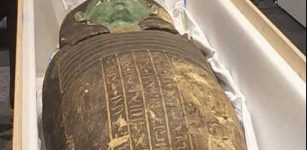 Egypt Recovers Ancient Wooden Coffin From Houston Museum In The US
Archaeology | Oct 4, 2022
Egypt Recovers Ancient Wooden Coffin From Houston Museum In The US
Archaeology | Oct 4, 2022 -
 On This Day In History: Sir Christopher Wren – Famous English Architect Was Born – On Oct 20, 1632
News | Oct 20, 2016
On This Day In History: Sir Christopher Wren – Famous English Architect Was Born – On Oct 20, 1632
News | Oct 20, 2016 -
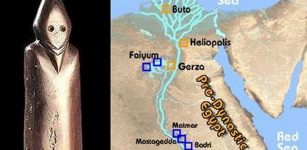 Mysterious Figurine Of Mythical Individual Dates Back To Egypt’s Naqada Culture 4400–3000 BC
Featured Stories | Sep 25, 2016
Mysterious Figurine Of Mythical Individual Dates Back To Egypt’s Naqada Culture 4400–3000 BC
Featured Stories | Sep 25, 2016 -
 Unexpected Discovery Of Huge Iron Age Roundhouse At Dinas Dinlle, Wales
Archaeology | Sep 9, 2019
Unexpected Discovery Of Huge Iron Age Roundhouse At Dinas Dinlle, Wales
Archaeology | Sep 9, 2019 -
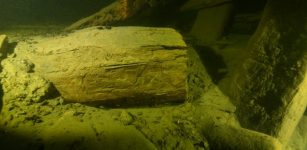 Barrels With Unique Intact Cargo Found On The Osmundvraket (Osmond Wreck)
Archaeology | Jun 7, 2024
Barrels With Unique Intact Cargo Found On The Osmundvraket (Osmond Wreck)
Archaeology | Jun 7, 2024 -
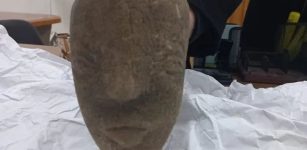 Rare 4,500-Year-Old Stone Sculpture Of Canaanite Goddess Anat Found By Farmer In Gaza Strip
Archaeology | Apr 26, 2022
Rare 4,500-Year-Old Stone Sculpture Of Canaanite Goddess Anat Found By Farmer In Gaza Strip
Archaeology | Apr 26, 2022 -
 Dramatic Life Story Of Queen Marie Antoinette Executed By Guillotine During The French Revolution
Featured Stories | Oct 18, 2021
Dramatic Life Story Of Queen Marie Antoinette Executed By Guillotine During The French Revolution
Featured Stories | Oct 18, 2021 -
 Scientists Unravel The Mystery Of The Alexander Sawney Bean Legend & Cave-Dwelling Cannibals In Scotland
Myths & Legends | Sep 24, 2015
Scientists Unravel The Mystery Of The Alexander Sawney Bean Legend & Cave-Dwelling Cannibals In Scotland
Myths & Legends | Sep 24, 2015 -
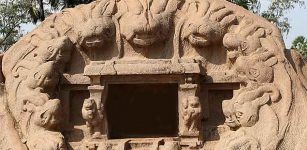 Tiger Cave: Rock-Cut Hindu Temple Complex Dated To East India’s Pallava Empire
Featured Stories | Jan 19, 2017
Tiger Cave: Rock-Cut Hindu Temple Complex Dated To East India’s Pallava Empire
Featured Stories | Jan 19, 2017 -
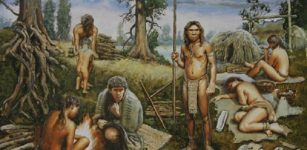 Humans Started Wearing Clothes 100,000 To 500,000 Years Ago
Ancient History Facts | Mar 17, 2018
Humans Started Wearing Clothes 100,000 To 500,000 Years Ago
Ancient History Facts | Mar 17, 2018 -
 Meet The First Neanderthal Family And Community
Archaeology | Oct 19, 2022
Meet The First Neanderthal Family And Community
Archaeology | Oct 19, 2022 -
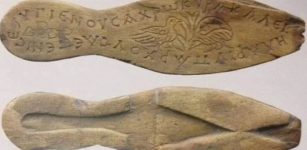 Byzantine Sandals With A Nice Message Found In The Harbor Of Eleutherios (Theodosius) – Now On Display
Artifacts | Apr 12, 2023
Byzantine Sandals With A Nice Message Found In The Harbor Of Eleutherios (Theodosius) – Now On Display
Artifacts | Apr 12, 2023 -
 Bolivia And The Mystery Of The Twins Of Atlantis
Ancient Mysteries | Nov 16, 2014
Bolivia And The Mystery Of The Twins Of Atlantis
Ancient Mysteries | Nov 16, 2014 -
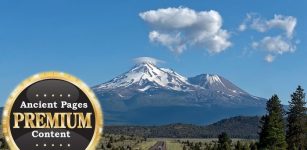 Secrets Of Mount Shasta – One Of The Most Sacred Places On Earth
Ancient Mysteries | Oct 24, 2015
Secrets Of Mount Shasta – One Of The Most Sacred Places On Earth
Ancient Mysteries | Oct 24, 2015 -
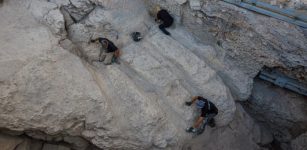 Mysterious 2,800-Year-Old Channel Installation Discovered In The City Of David, Jerusalem
Archaeology | Aug 30, 2023
Mysterious 2,800-Year-Old Channel Installation Discovered In The City Of David, Jerusalem
Archaeology | Aug 30, 2023 -
 12,000-Year-Old Burial Of Female Shaman Unearthed In Turkey
Archaeology | Jul 31, 2024
12,000-Year-Old Burial Of Female Shaman Unearthed In Turkey
Archaeology | Jul 31, 2024 -
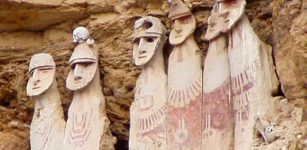 Genetic Evidence Reveals: Chachapoyas “Cloud People” Resistant To Inca Rule
Archaeology | Dec 14, 2017
Genetic Evidence Reveals: Chachapoyas “Cloud People” Resistant To Inca Rule
Archaeology | Dec 14, 2017 -
 Before Ragnarok: Horrifying Fimbulwinter In Norse Mythology Was Based On Real Events
Featured Stories | Nov 1, 2016
Before Ragnarok: Horrifying Fimbulwinter In Norse Mythology Was Based On Real Events
Featured Stories | Nov 1, 2016 -
 ‘Exceptional’ Ancient Roman Bath Complex Discovered In Mérida, Spain
Archaeology | Aug 21, 2023
‘Exceptional’ Ancient Roman Bath Complex Discovered In Mérida, Spain
Archaeology | Aug 21, 2023


